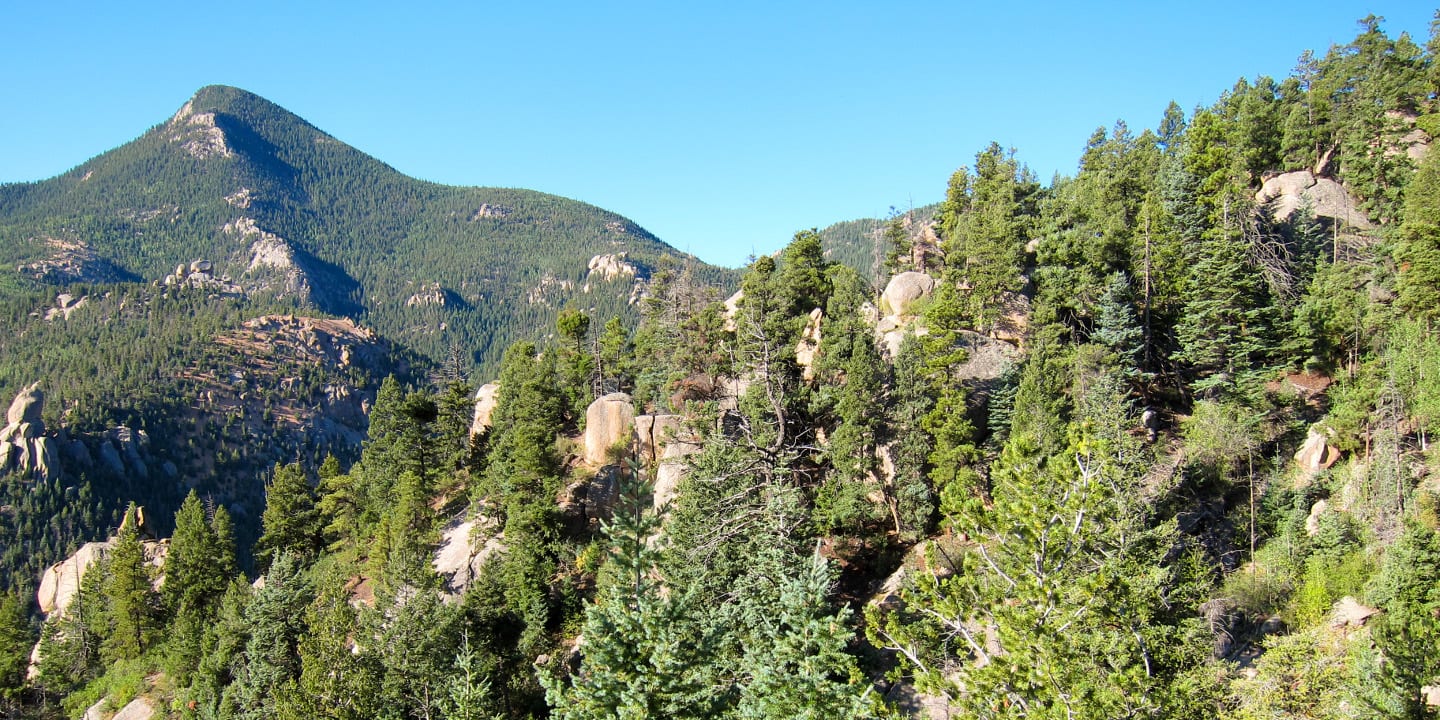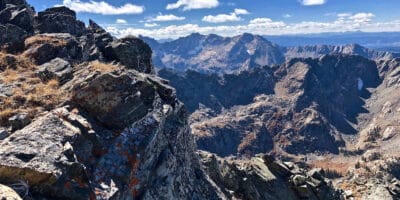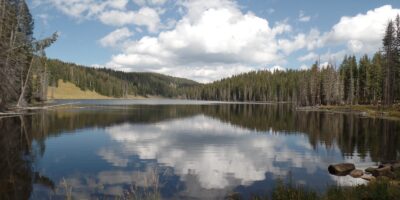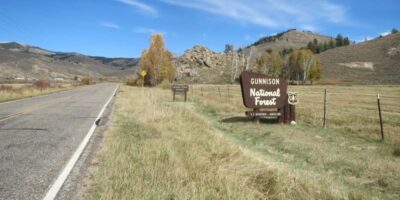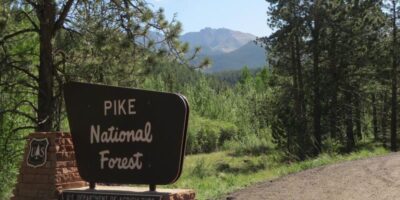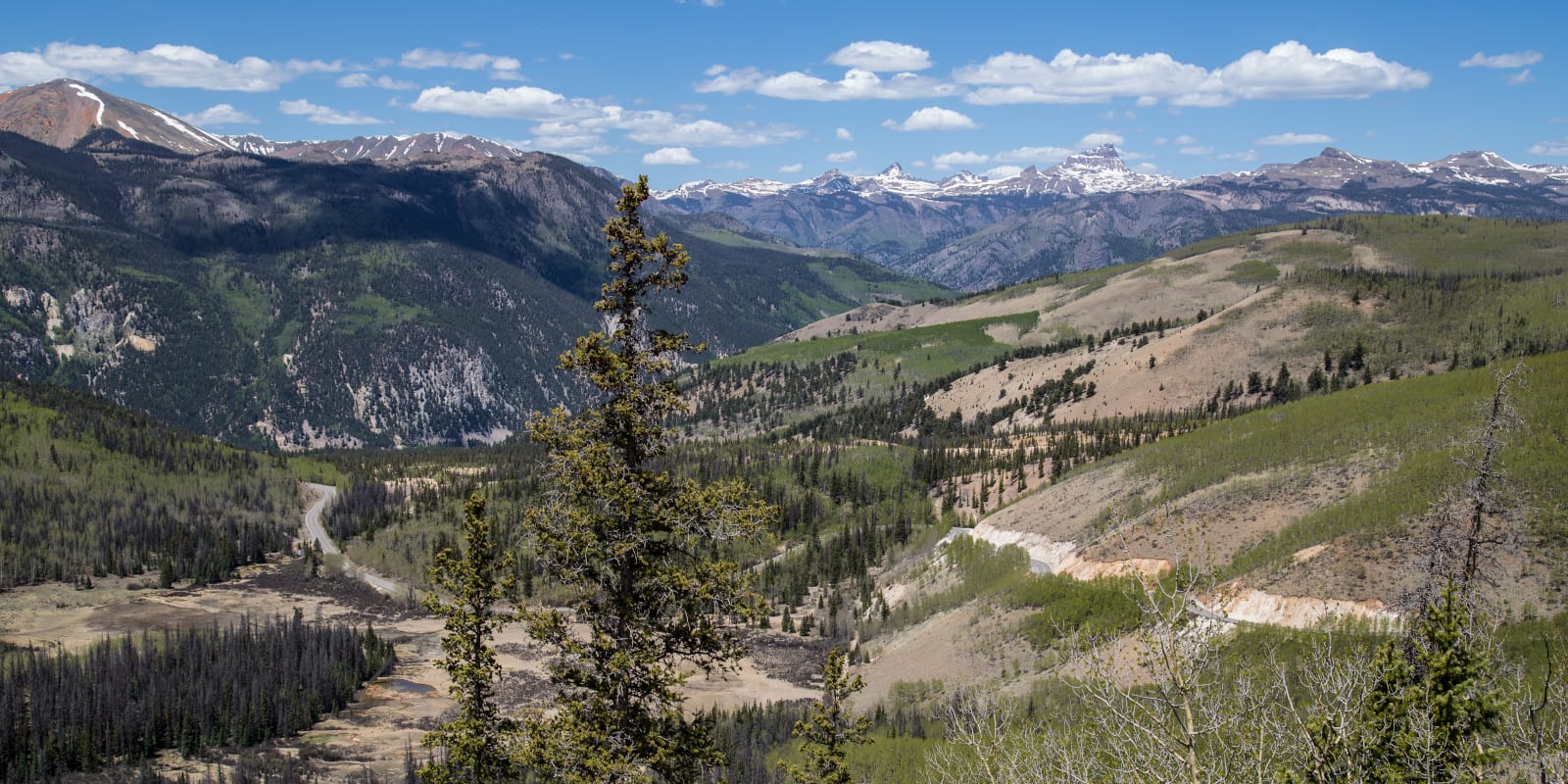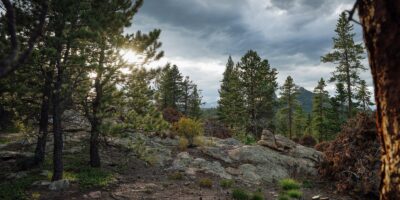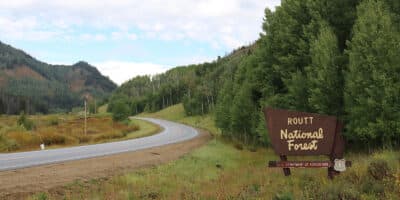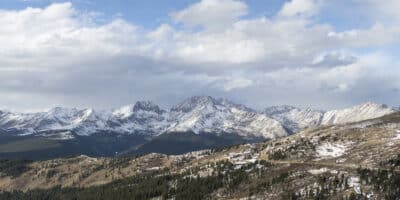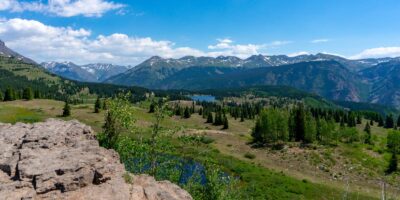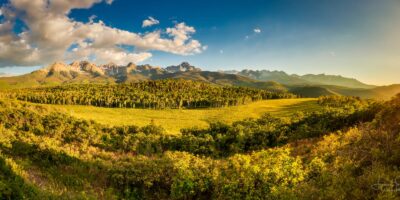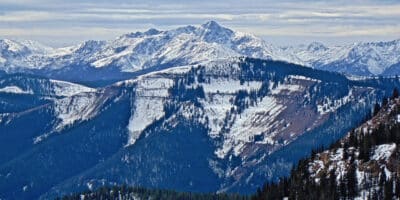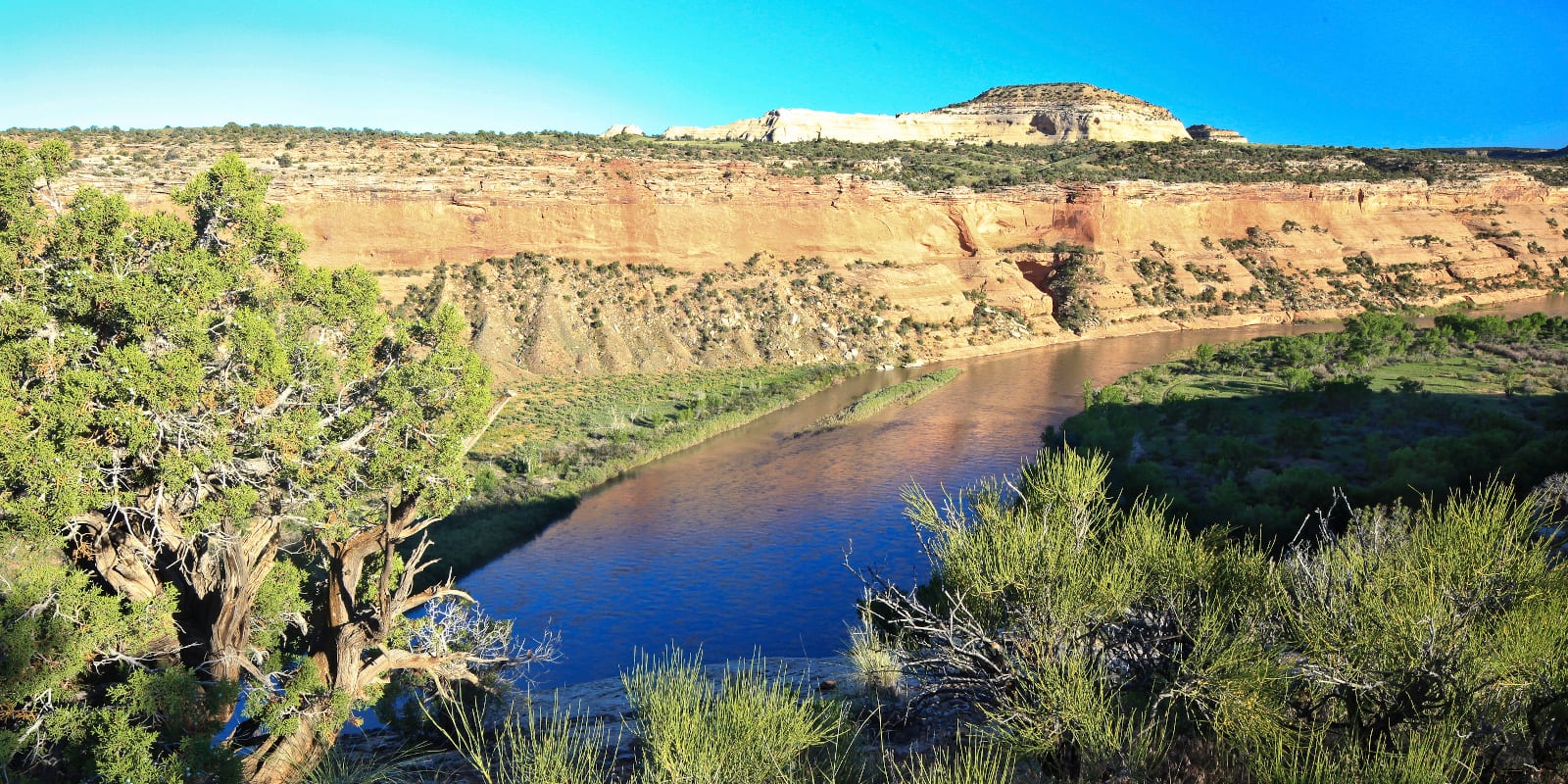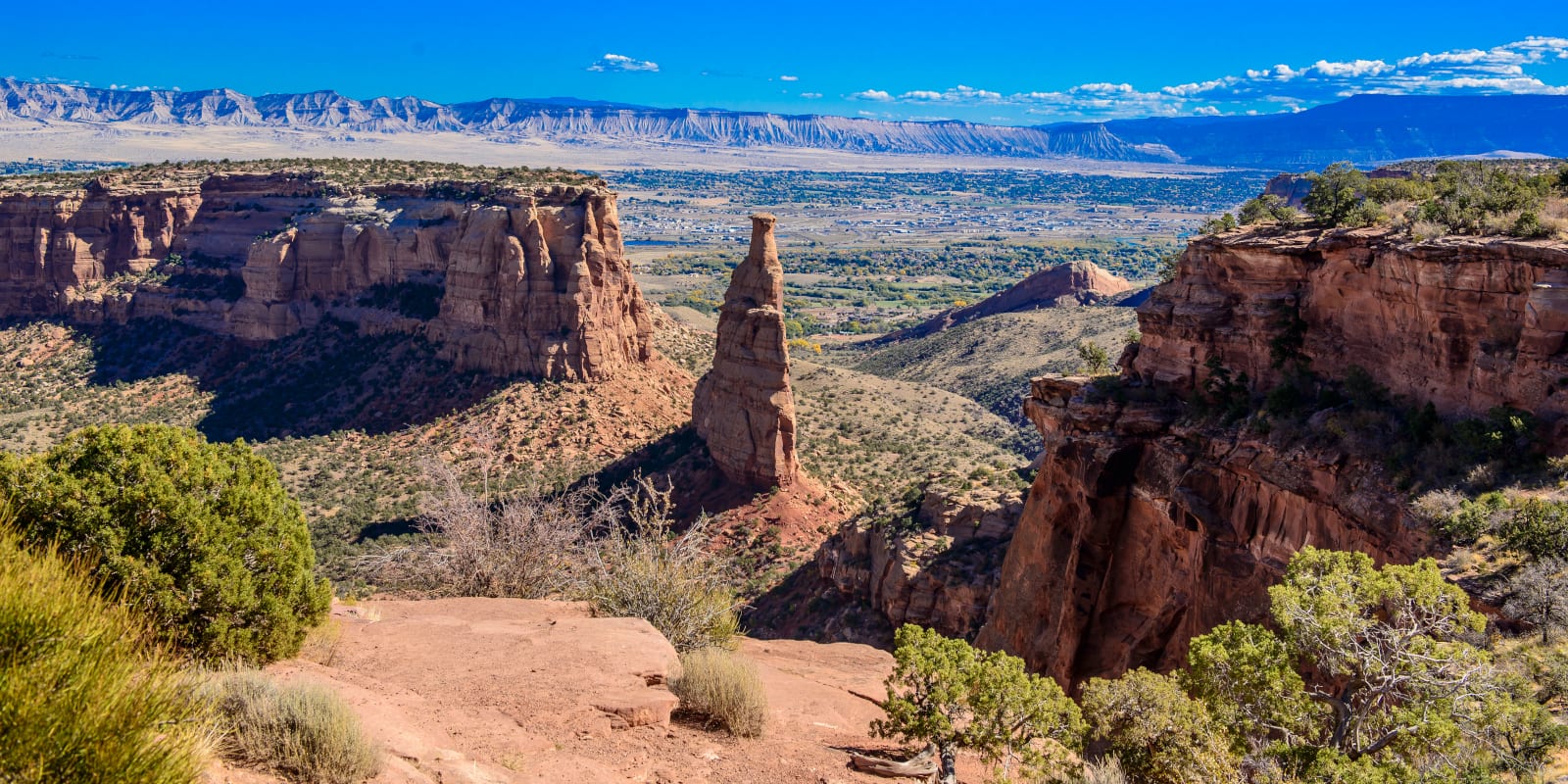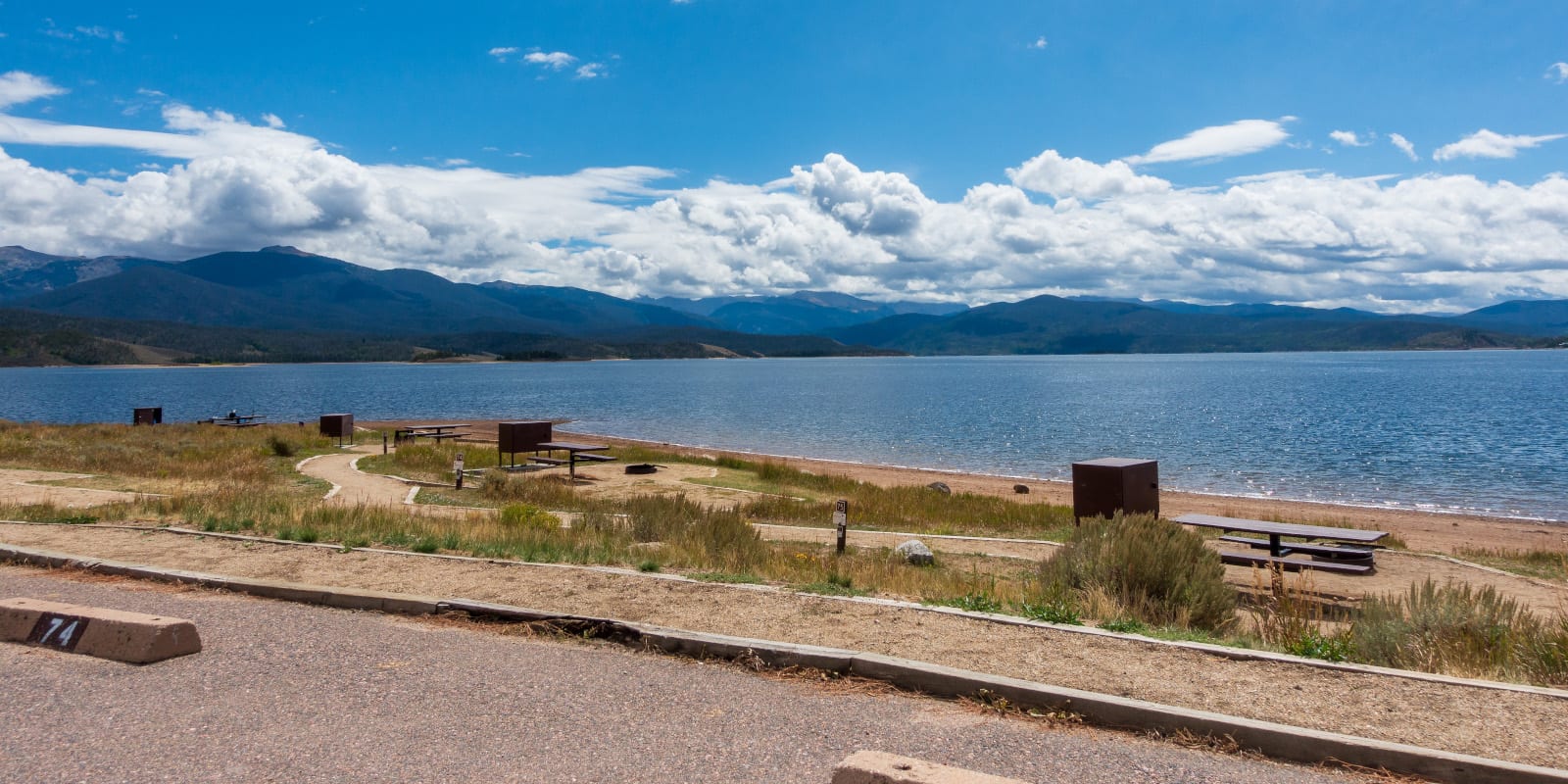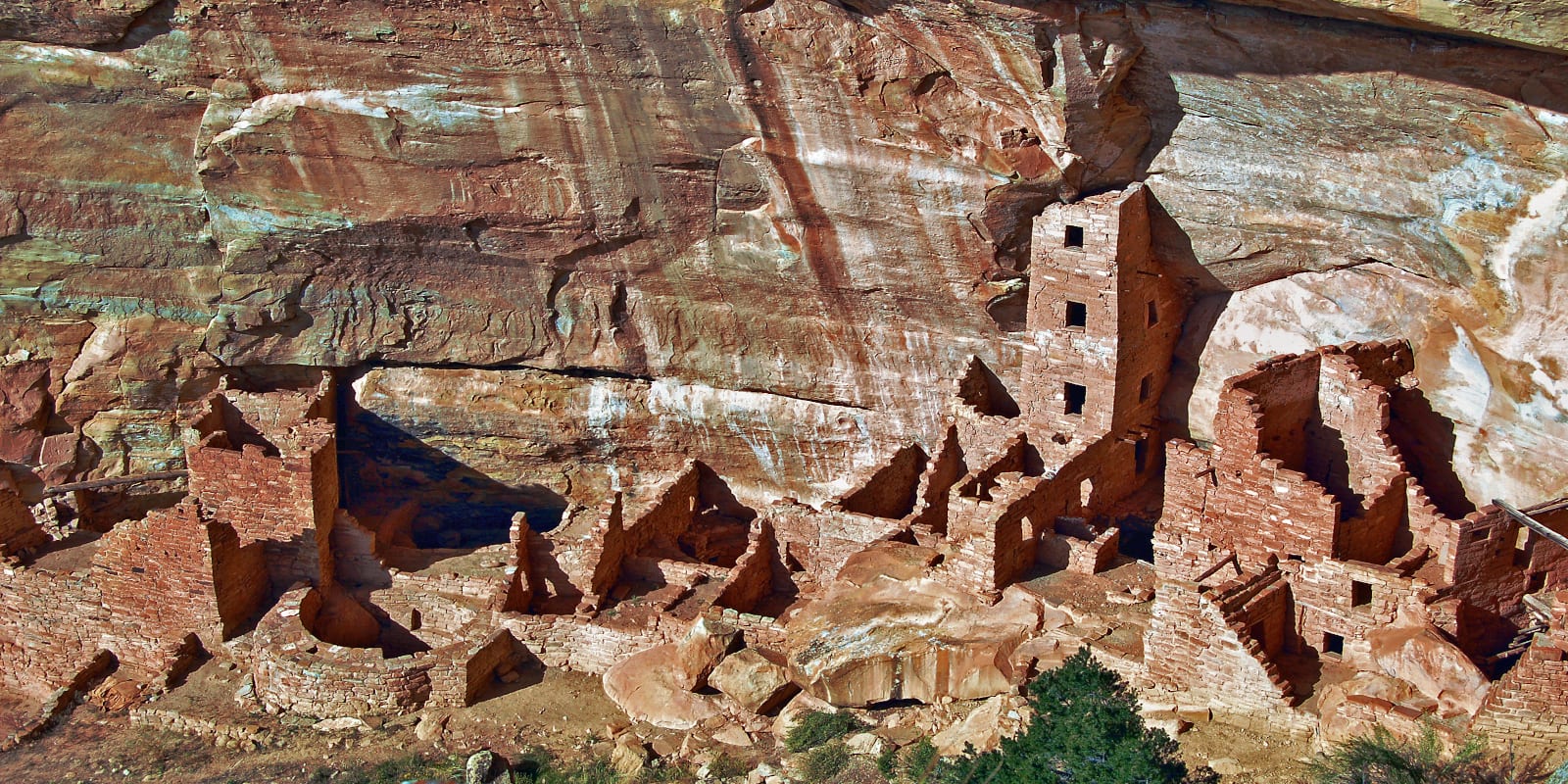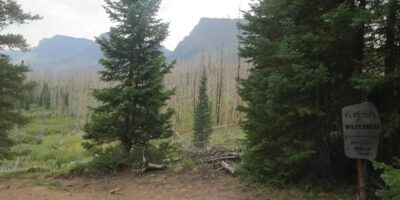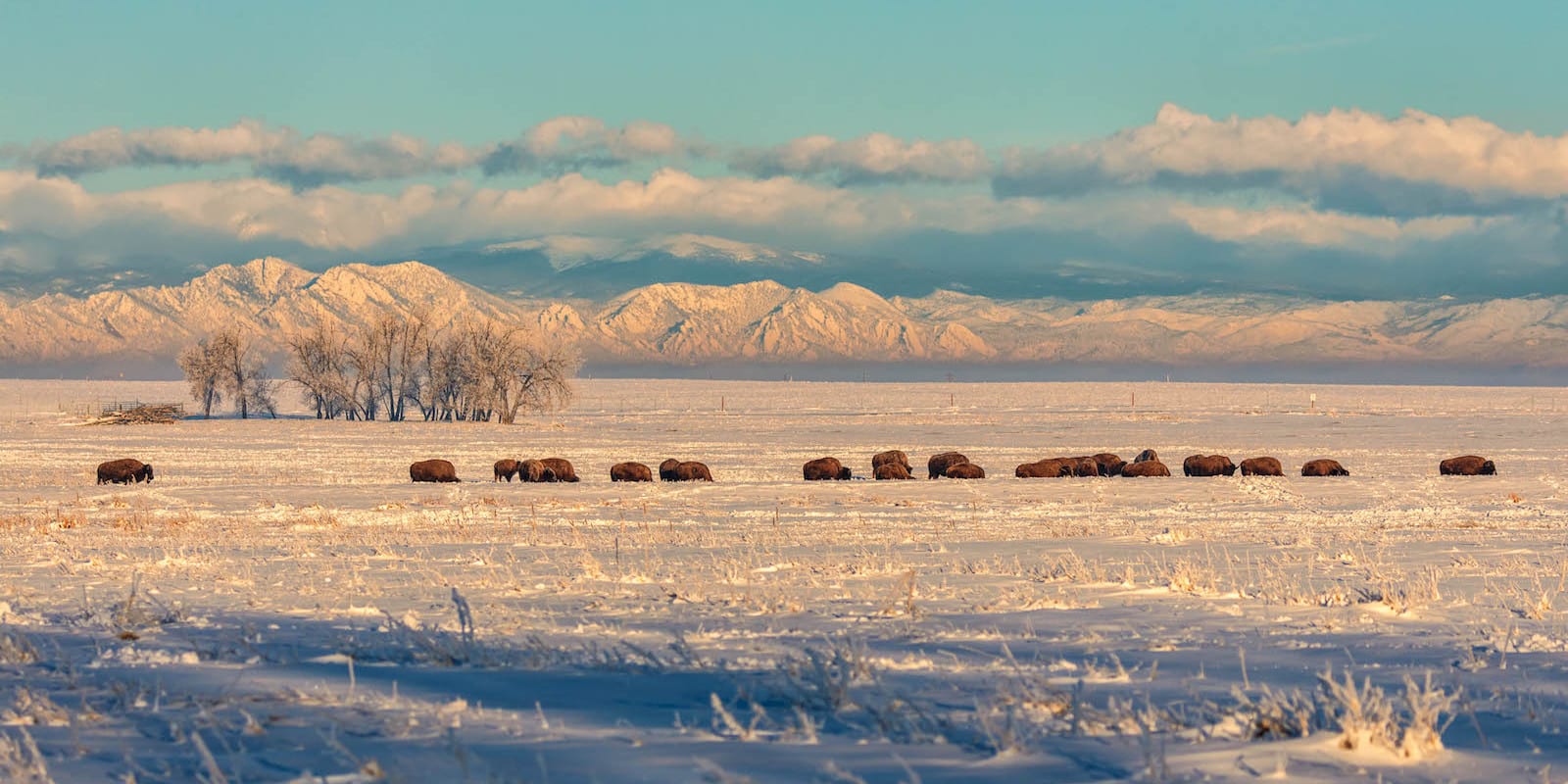Colorado’s vast national forests are probably its biggest asset. They preserve, protect, and promote the responsible use of millions of acres of public land in this state only. These federal lands are open to the public year-round, for a wide variety of recreation.
List of 12 National Forests
Colorado has eleven national forests located entirely within its state borders. There’s also the lone Manti-La Sal National Forest in Eastern Utah, which spreads into Western Colorado for a small portion. All year long, these public lands are open to your exploration, with activities ranging from summer hiking, biking, fishing, and camping to winter cross-country skiing, snowshoeing, and snowmobiling. View all federal lands.
Map of National Forests
Guide to National Forests in Colorado
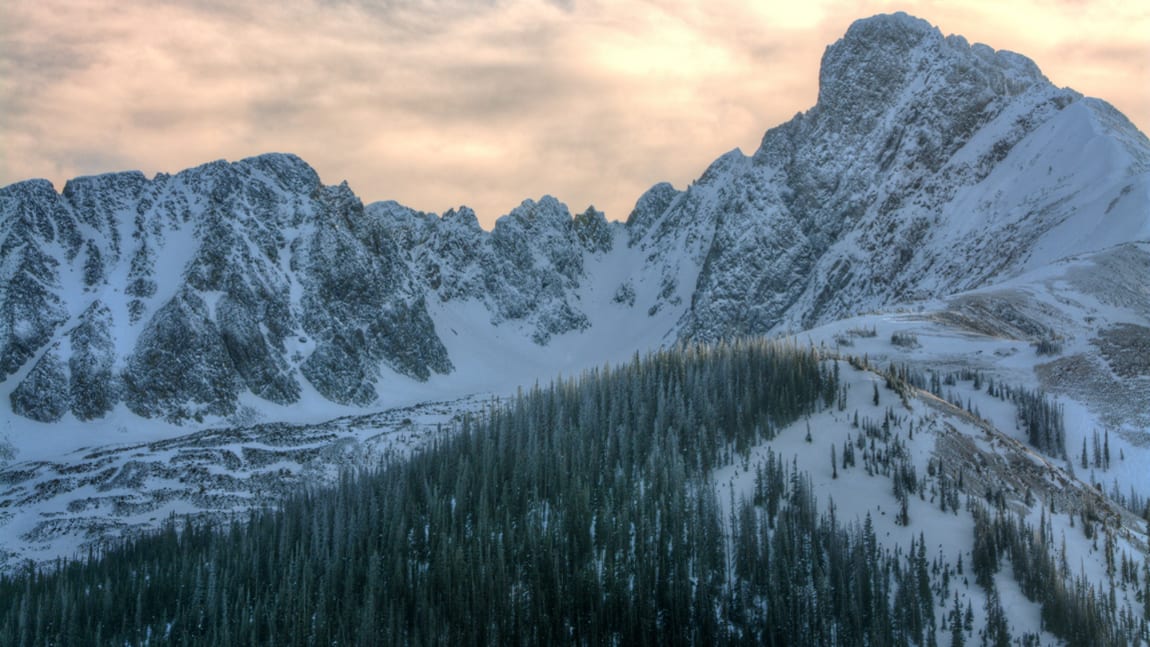
Twelve national forests cover millions of acres throughout the Colorado Rocky Mountains, eleven of which are entirely located within the state. The twelfth is the Manti-La Sal National Forest, which spreads into Utah for its majority. They are found across the state, west of the plains. Year-round outdoor recreation is featured in these free federal lands, from fishing and camping to snowmobiling and Nordic skiing.
Each of the twelve national forests found within Colorado is unique, with similar, yet different landscapes and ecosystems. Whether you’re out west exploring the mesa tops or in the San Juans marveling at some of the steepest, you’ll love exploring these Colorado’s wooded landscapes.
The national forests can be found throughout the Rocky Mountains. They cover millions of acres across the state. The national forests in Colorado include:
- Arapaho National Forest
- Grand Mesa National Forest
- Gunnison National Forest
- Manti-La Sal National Forest (mostly in Utah)
- Pike National Forest
- Rio Grande National Forest
- Roosevelt National Forest
- Routt National Forest
- San Isabel National Forest
- San Juan National Forest
- Uncompahgre National Forest
- White River National Forest
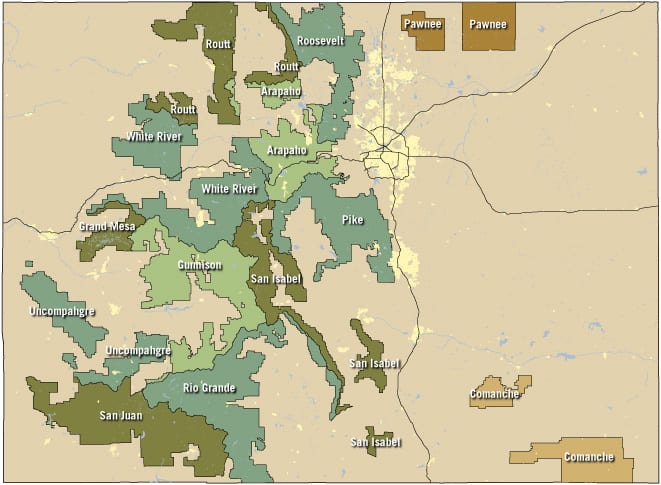
The national forests and national grasslands are generally free to access, though there are some day-use fee areas, as well as paid campgrounds. They offer a huge variety of terrain suitable for many types of outdoor adventures.
In the winter cross country skiing, backcountry snowboarding, and winter camping are popular activities in these areas. The summer months host hikers and backpackers. Some areas are open to hunting and fishing with the appropriate permits.
Colorado’s national forests are home to an abundance of wildlife including 16 endangered species. Visitors can hope to see bald eagles soaring overhead and should be on the lookout for the elusive mountain lynx.
During the autumn color change, the non-conifer trees change to wonderful shades of yellow, orange, and red. Entire hillsides contain a single living grove of aspen trees that will engulf the forests in lush fall colors. The dates for the autumn color shift vary by elevation and weather, but generally happen from mid-September to early October, starting with the highest, coldest places. Prime time for fall color drives.
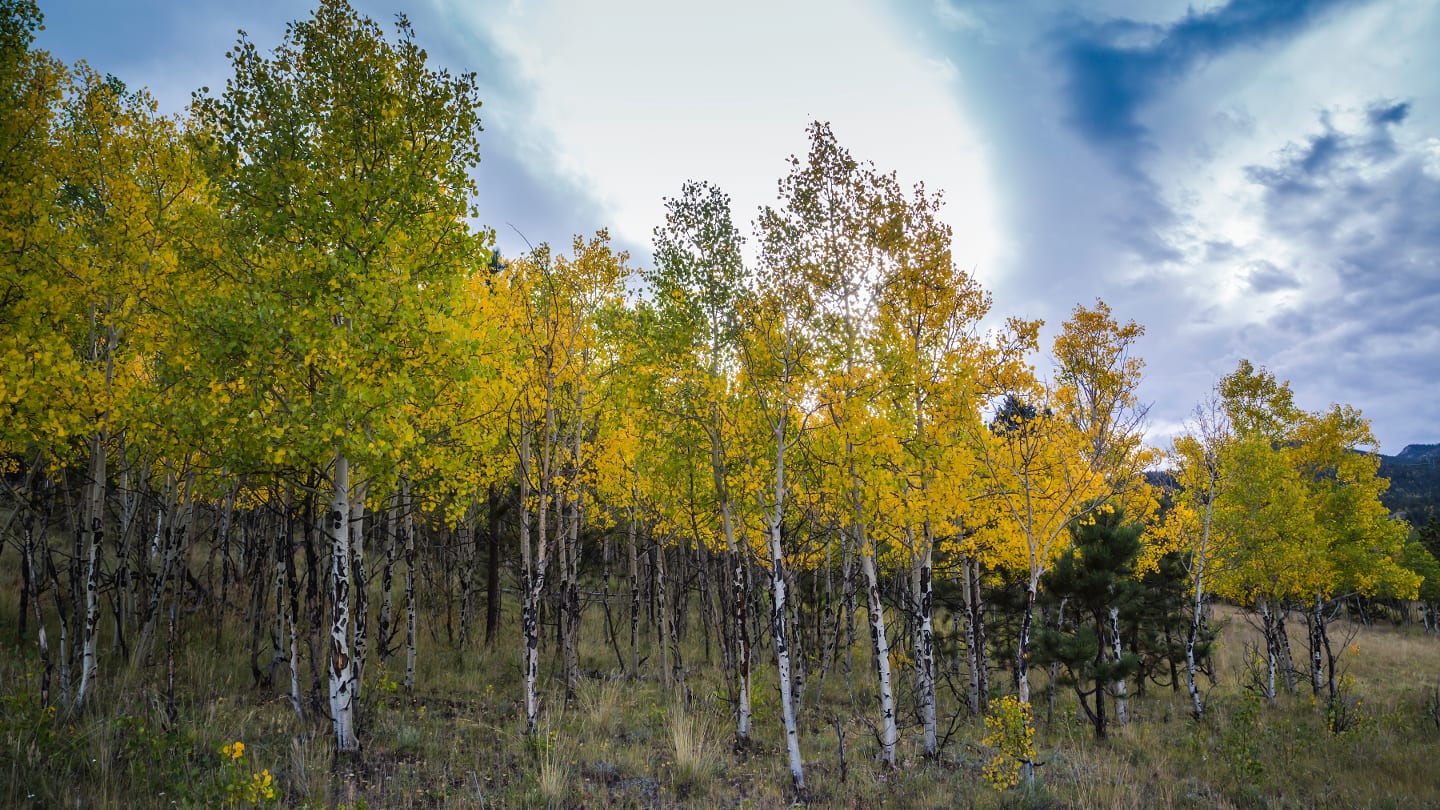
During the spring and summer months, wildflowers abound in Colorado’s national forests. Visitors will enjoy seeing trails dotted with wild columbines, bluebells, and Indian paintbrush. These gorgeous flowers paint the forest with bright colors and lure migrating hummingbirds back to the forest with their sweet nectar. Watch these tiny birds flit through the sky while listening to the chatter of squirrels high up in the trees.
Whether you’re looking for a beautiful day hike or an extended backpacking trip Colorado’s national forests will provide the peace and solitude you are looking for.

